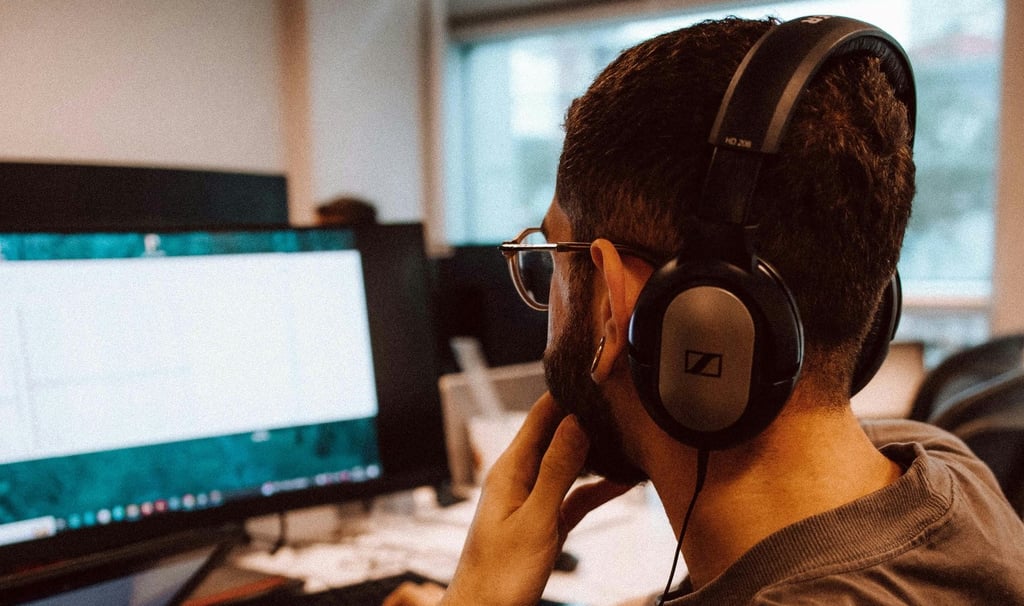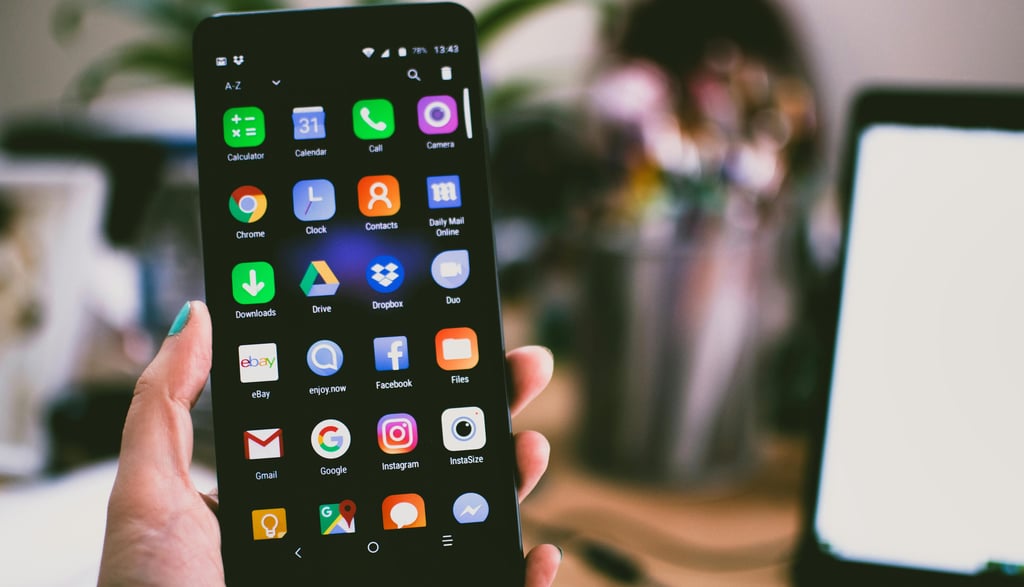Freelancing Jobs for UI Design: Fiverr Pro in 2025
3/19/202510 min read


Understanding UI Design Needs in 2025
As we move towards 2025, the realm of User Interface (UI) design is undergoing significant transformation influenced by technological advancements and shifting user expectations. To thrive in the freelancing market, particularly on platforms like Fiverr Pro, UI designers must adapt to these evolving requirements. The demand for user-centric designs is at the forefront, emphasizing a deep understanding of user behavior and preferences. A successful UI designer must be attuned to the needs of the target audience, ensuring that every design element contributes to a seamless and enjoyable user experience.
Additionally, the rise of interactive elements in digital interfaces cannot be understated. Designers are now expected to integrate animations, micro-interactions, and responsive layouts that enhance user engagement. These interactive features not only make interfaces visually appealing but also encourage user retention and satisfaction. Consequently, proficiency in design tools that facilitate the creation of such elements is paramount. Designers need to remain updated with the latest software and technologies that aid in crafting dynamic and immersive experiences.
Moreover, with the expansion of smart devices and varied screen sizes, designing for multiple platforms has become essential. UI designers must ensure consistency across different devices, optimizing interfaces for mobile applications, web platforms, and emerging technologies like augmented reality (AR) and virtual reality (VR). Understanding the nuances of cross-device functionality is crucial for a competitive edge in the market.
Finally, a commitment to continuous learning and professional growth is essential in this rapidly evolving landscape. Designers should actively engage with the latest trends, participate in workshops, and seek feedback from peers and clients to refine their skills. By embracing these qualities, UI designers can position themselves favorably for success in the freelancing landscape in 2025 and beyond.
Overview of Freelancing Jobs for UI Designers
The freelancing landscape for UI designers has evolved significantly in recent years, particularly with the rise of platforms such as Fiverr Pro. This online marketplace affords designers the opportunity to connect with clients looking for specialized skills in user interface design. Freelancing in this domain offers a range of benefits that make it an attractive career choice for many creative professionals.
One of the primary advantages of freelancing is the flexibility it provides. UI designers have the liberty to choose their working hours, allowing them to tailor their schedules around personal commitments or preferences. This aspect can greatly enhance work-life balance and overall job satisfaction. Moreover, freelancers can select projects that align with their interests and expertise, offering an opportunity to both diversify their portfolios and foster professional growth.
Through platforms such as Fiverr Pro, UI designers gain access to a diverse array of projects. These can range from designing user interfaces for mobile applications to creating engaging web layouts for various businesses. Each project presents a unique opportunity for collaboration with clients across different industries, allowing designers to broaden their skills and experiences. As they build their portfolios, freelancers can also begin to establish their brand within the competitive UI design market.
Additionally, freelancing allows designers to set competitive rates based on their skills and the complexity of the projects they undertake. This autonomy in pricing not only ensures that designers are compensated fairly for their work but also encourages them to constantly improve and upskill to meet client expectations while maintaining quality and creativity.
In summary, the UI design freelancing landscape is rich with opportunities through platforms like Fiverr Pro, catering to a variety of creative professionals eager to showcase their talent and innovate within a flexible work environment.
Mobile App UI Design
The demand for mobile app UI design is experiencing significant growth in 2025, driven by the increasing reliance on mobile devices for everyday activities. As more businesses recognize the necessity of providing exceptional user experiences, the need for skilled mobile app UI designers becomes paramount. To excel in this competitive field, designers must possess a blend of technical skills and creative abilities that enable them to create intuitive and visually appealing interfaces.
Clients seeking mobile app UI designers look for a strong portfolio that showcases a range of projects demonstrating not only aesthetic appeal but also usability. Designers should be familiar with design principles, color theory, typography, and responsive design to create interfaces that cater to various screen sizes and orientations. Knowledge about the latest design tools, such as Sketch, Adobe XD, or Figma, is increasingly necessary to keep up with evolving industry standards. Furthermore, understanding user experience (UX) principles is essential, as the ultimate goal of mobile app UI design is to enhance user engagement and satisfaction.
Successful projects on platforms like Fiverr Pro serve as excellent examples of the impact that high-quality UI design can have on an app's success. Many clients have reported significant increases in user retention and engagement after implementing refined UI designs. Features like streamlined navigation, interactive elements, and cohesive visual themes are crucial in creating apps that stand out in a crowded marketplace. As a mobile app UI designer, continuously evolving your skills through courses, workshops, and community engagement can further enhance your portfolio and marketability.
For those looking to bolster their competencies in mobile app UI design, consider exploring targeted services and courses available on Fiverr Pro, which can provide valuable insights and training to propel your design career forward.
Website UI Design
As we progress into 2025, the significance of website UI design continues to grow, underscoring its role in shaping user experiences across digital platforms. Businesses are increasingly recognizing that their online presence is a crucial element of their branding and customer engagement strategies. Consequently, they are rethinking how they approach their website designs to establish a captivating and intuitive user interface that can captivate users effectively.
Central to impactful website UI design are several key elements such as navigation, visual hierarchy, and responsive layouts. A well-structured navigation menu allows users to traverse a site effortlessly, enhancing usability. Visual hierarchy, on the other hand, guides users' attention toward priorities on a page, ensuring that the most critical content catches the eye first. Additionally, with the increasing prominence of mobile device usage, designing responsive layouts that adapt seamlessly to varied screen sizes is paramount for maintaining a consistent user experience.
For freelancers looking to thrive in the website UI design arena, various skills are essential. Proficiency in tools like Adobe XD, Figma, or Sketch is vital, along with a solid understanding of UX principles, typography, and color theory. Moreover, keeping abreast of current design trends will aid designers in creating fresh, engaging layouts that resonate with users. Platforms such as Fiverr Pro provide a myriad of projects related to website UI design, ranging from creating custom landing pages to comprehensive site redesigns. Freelancers can explore these opportunities to showcase their skills and attract clients actively seeking innovative design solutions.
For those interested in enhancing their website UI design capabilities, numerous online resources and tools are available. Investing in such tools can significantly boost a designer's efficiency and quality of work, helping them stand out in a competitive freelance environment.
E-commerce UI Design
The significant rise of online shopping has underscored the essential role of effective e-commerce UI design. As consumers increasingly rely on digital platforms for purchasing goods, the user interface (UI) becomes a pivotal aspect of their experience. E-commerce UI design is focused on creating interfaces that are not only visually appealing but also highly functional, ensuring that users can navigate effortlessly through product selections while maintaining a seamless purchasing process.
One of the unique challenges of e-commerce UI design involves accommodating diverse user preferences and behaviors. Designers must consider elements such as mobile responsiveness, as a substantial portion of online shoppers use smartphones for transactions. Additionally, e-commerce platforms often require intuitive navigation and a streamlined checkout process to minimize cart abandonment rates. Each of these components is crucial in enhancing the overall user experience and fostering customer retention.
Successful e-commerce UI designers exhibit a strong understanding of color psychology, visual hierarchy, and usability principles. They utilize these elements not only to create an aesthetically pleasing interface but also to guide users toward critical actions, such as adding items to a cart or completing a purchase. Incorporating trust signals, such as customer reviews and secure payment options, further solidifies user confidence in the platform, significantly impacting conversion rates.
For those interested in pursuing a freelance career in e-commerce UI design, platforms like Fiverr Pro offer valuable opportunities to connect with clients who seek specialized skills in this field. Freelancers can showcase their portfolios, emphasizing effective design solutions that have enhanced previous clients' online shopping experiences. By highlighting successful projects involving innovative UI elements, designers position themselves as experts in e-commerce UI design, ready to meet the growing demand in 2025 and beyond.
Game UI Design
Game UI design is a specialized field that merges creativity and technical skills, taking into account the unique requirements of video games. As the gaming industry continues to expand, the demand for skilled game UI designers is expected to increase. This discipline not only involves creating aesthetically pleasing interfaces but also focuses on enhancing user experience (UX) by ensuring that gameplay elements are intuitive and engaging.
One of the fundamental aspects of game UI design is understanding the target audience. Game designers must consider factors such as the demographic of players, the genre of the game, and user engagement strategies. Developers often employ various methodologies to analyze player behavior, allowing designers to craft interfaces that cater specifically to their needs. Trends in game UI design have shifted toward minimalism and clarity, minimizing on-screen clutter while ensuring essential information is readily accessible.
Tools commonly used by game UI designers include Adobe XD, Figma, and Unity, which support prototyping and collaboration within teams. Additionally, learning platforms such as Udemy and Coursera offer courses focused on game UI design, giving aspiring designers the necessary skills to thrive in this competitive space. Engaging in projects that utilize these tools greatly enhances a designer's portfolio, showcasing their ability to handle the complexities of varying game styles.
Successful examples in the realm of game UI design demonstrate the importance of creativity and innovation. Games like "The Last of Us Part II" and "Hollow Knight" exemplify well-executed user interfaces that contribute significantly to overall player enjoyment. They combine storytelling with interactable elements, drawing players deeper into the gaming experience. The continuous evolution of technology and player expectations means that aspiring game UI designers must remain adaptable and updated with industry trends and practices.
SaaS Product UI Design
The rapid expansion of Software as a Service (SaaS) offerings has necessitated a distinct approach to user interface (UI) design. In this competitive market, proficient SaaS designers must prioritize usability and create seamless user experiences to attract and retain customers. A successful SaaS product UI should facilitate intuitive navigation and ensure that users can accomplish their tasks with minimal effort. This emphasis on usability helps to reduce the learning curve, fostering a sense of familiarity and ease for the user.
Another vital aspect of SaaS product UI design is user onboarding. Accurately guiding users through the initial setup and usage of the software is paramount. A comprehensive onboarding process might include interactive tutorials, tool tips, or guided walkthroughs that effectively demonstrate core functionalities. This approach not only enhances user satisfaction but also contributes to higher retention rates, as users are less likely to abandon a product that they can readily understand and utilize.
Aesthetically pleasing design also plays a crucial role in the success of SaaS products. Users are more likely to engage with a product that not only functions well but also looks appealing. Consistent branding and a visually organized layout can significantly enhance the overall user experience. Color schemes, typography, and visual hierarchy must all work in tandem to direct user attention and prioritize important information. Additionally, incorporating responsive design ensures that the UI remains effective across a myriad of devices, catering to an increasingly mobile user base.
For freelancers looking to excel in SaaS product UI design, there are numerous resources and courses available to deepen their understanding and sharpen their skills. By investing in these educational materials, designers can stay abreast of the latest trends and methodologies, ultimately improving their ability to create compelling and effective SaaS interfaces that meet the evolving needs of clients in this dynamic sector.
Call to Action: Launch Your Career with Fiverr Pro
As we navigate through the ever-evolving landscape of freelancing jobs for UI design, it's essential to recognize the opportunities that platforms like Fiverr Pro provide. If you are aspiring to elevate your career in UI design, Fiverr Pro offers a valuable avenue to connect with clients who value quality and professionalism. With its streamlined interface and vast network of potential clients, becoming part of this platform can significantly enhance your visibility in the design community.
To effectively present your work on Fiverr Pro, begin by creating a comprehensive profile that highlights your skills and experiences. Be sure to include a polished portfolio, showcasing your best UI design projects. Visuals speak volumes in this industry, so opt for high-quality images and precise descriptions to illustrate your contributions to each project. Tailoring your portfolio to reflect your unique style and capabilities will ensure that potential clients see the value you can bring to their projects.
Moreover, consider leveraging Fiverr Pro's built-in features such as service packages and client reviews. Creating tiered offerings can help cater to various budget-friendly options while still maintaining a premium service. Additionally, positive reviews from previous clients significantly enhance your credibility, making it imperative to provide exceptional service that encourages feedback.
It is also advisable to stay active on the platform by consistently updating your portfolio, responding promptly to inquiries, and engaging with the community. Networking with other freelancers and clients can open doors to collaborations and opportunities that you might not have considered before. By taking these actionable steps and joining Fiverr Pro, you can confidently embark on your freelancing journey in UI design, setting the stage for a successful career ahead.


























